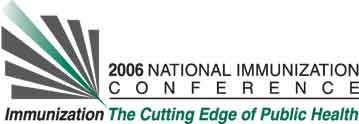John Stevenson, NIP/ISD/HSREB, CDC, 1600 Clifton Road, NE, MS E-52, Atlanta, GA, USA and Karen A. Wilkins, NIP/Global Immunization Division, Centers for Disease Control and Prevention, 1600 Clifton Rd NE, Mailstop E-05, Atlanta, GA, USA.
Learning Objectives for this Presentation:
By the end of the presentation participants will be able to understand strategies available to strengthen childhood immunization programs in developing countries.
Background:
In 2002, CDC/NIP/GID/Global Measles Branch, initiated a project in collaboration with the Government of Kenya (GOK), WHO, and UNICEF to strengthen the childhood immunization program in Kenya. In May 2003 interventions to improve immunization in three districts began.
Setting:
The government of Kenya, through the Ministry of Health provides health services through a four level system: national level, 8 provinces, 78 districts and 3154 health facilities.
Population:
Kenya has a population of 31.5 million with an annual birth cohort of 1.03 million.
Project Description:
Data management was strengthened by developing applications for management and analysis of routine immunization data at the national and provincial level and at the district level in the 3 intervention districts. Three intervention districts were selected based on poor access or high drop out rates. With the support of national staff, provincial, district and local health facility staff were trained to identify district and facility specific problems with regard to access and/or utilization of immunization services, and to identify root causes, and develop and implement solutions. Key elements of the intervention were enhanced supportive supervision, outreach, defaulter tracing and social mobilization. Each intervention district received approximately $10,000 per year for a period of two years.
Results/Lessons Learned:
The three intervention districts showed in increase in measles coverage of 34.9 percentage points (p = 0.02) and an increase in Pentavalent dose 3 coverage of 31.2 percentage points (p = 0.04). In contract, for the non-intervention districts the change in measles and pentavalent coverage was 2.8 (p = 0.16 ) and -2.3 percentage points (p = 0.17 ) respectively.
See more of Posters
See more of The 40th National Immunization Conference (NIC)

